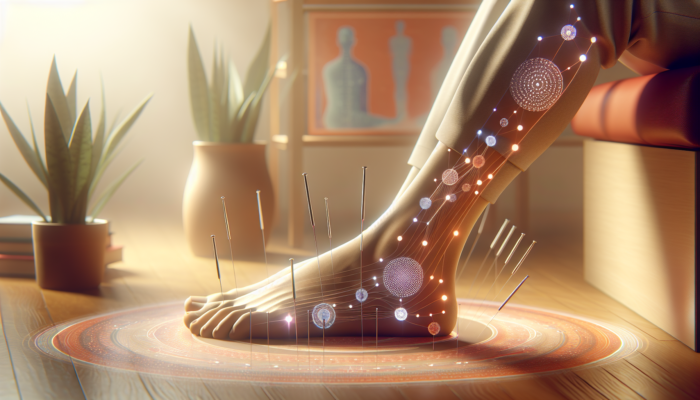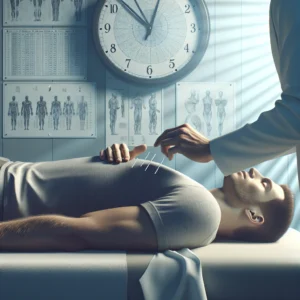Discover the Transformative Healing Power of Acupuncture for Alleviating Restless Leg Syndrome Symptoms
With an increasing number of people seeking holistic wellness solutions, acupuncture has gained recognition as a highly effective method to relieve the discomfort caused by restless leg syndrome (RLS). This practice is deeply rooted in the ancient principles of Traditional Chinese Medicine and is becoming increasingly popular among those affected by the distressing sensations typical of RLS. In this thorough examination, we will explore the intricacies of RLS, the operational mechanisms of acupuncture, and the substantial clinical evidence that supports its effectiveness in offering much-needed relief.
Identifying the Symptoms and Root Causes of Restless Leg Syndrome for Effective Management
Restless leg syndrome is marked by an uncontrollable urge to move one’s legs, often accompanied by uncomfortable sensations such as crawling, tingling, or aching. These distressing feelings typically intensify during periods of inactivity, especially at night, leading to significant disruptions in sleep patterns. This cycle of discomfort can lead to chronic fatigue and heightened irritability, severely impacting an individual’s overall quality of life and emotional well-being. Recognizing these symptoms is the crucial first step toward achieving effective management and restoring balance.
Although the precise origins of RLS remain somewhat elusive, research suggests that genetic predisposition may play a significant role in its manifestation. Other potential contributors include iron deficiency, various chronic health conditions, and even pregnancy. Developing a thorough understanding of these elements is vital for crafting effective treatment strategies. Moreover, imbalances in dopamine pathways in the brain, which are essential for regulating movement, have been associated with this condition. Thus, addressing these factors through acupuncture might present a promising avenue for relief, tackling both the symptoms and their underlying causes.
Understanding Acupuncture Mechanisms: How This Ancient Therapy Provides Relief
The fundamental principle of acupuncture revolves around harmonizing the body’s energy, known as “Qi.” This ancient method involves the careful insertion of fine needles at specific points along the body’s meridians, which helps stimulate the nervous system, enhance blood circulation, and promote the release of endorphins—natural compounds that alleviate pain. This multifaceted approach can dramatically reduce the discomfort associated with RLS.
From a scientific standpoint, acupuncture is believed to modulate neurotransmitter levels, including dopamine, which is crucial in the pathophysiology of RLS. By restoring normal function within the nervous system, acupuncture alleviates unpleasant sensations while fostering relaxation and an overall sense of well-being. Many individuals have reported significant symptom relief after just a few sessions, highlighting the potential of acupuncture as both a primary and complementary treatment for RLS.
Exploring Clinical Evidence: Strong Support for Acupuncture in Managing RLS
Recent clinical studies have shed light on the efficacy of acupuncture for restless leg syndrome. Multiple clinical trials have shown that patients receiving acupuncture treatments experience significant reductions in their RLS symptoms. One notable study published in a reputable medical journal indicated that patients undergoing acupuncture reported substantial improvements in both the frequency and severity of their symptoms compared to those in placebo groups.
Furthermore, meta-analyses suggest that acupuncture tends to be more effective when combined with lifestyle changes, such as dietary modifications and regular physical activity. These findings emphasize the importance of a holistic approach to managing RLS, reinforcing the idea that acupuncture can be an integral component of a comprehensive treatment plan to enhance overall wellness.
By integrating ancient wisdom with contemporary scientific understanding, we can appreciate acupuncture’s role as a powerful ally in the management of restless leg syndrome. By thoroughly grasping the symptoms, underlying mechanisms, and clinical validation, individuals can make well-informed choices regarding their treatment options.
Launching Your Acupuncture Experience: Key Insights and Preparation Strategies

Embarking on your acupuncture journey for RLS may initially seem intimidating, but proper preparation can greatly enhance the effectiveness and overall enjoyment of your treatment experience. Understanding what to expect can help alleviate any concerns and maximize the therapeutic benefits of your sessions.
Selecting the Ideal Acupuncturist: Important Qualifications and Areas of Expertise
Finding a qualified acupuncturist is a crucial step toward successfully alleviating RLS. Seek practitioners who have graduated from accredited institutions and hold a valid license to practice in your area. Additionally, choosing someone who specializes in treating conditions like restless leg syndrome can significantly increase the effectiveness of your treatment.
It is advisable to arrange consultations or interviews with potential acupuncturists. During these discussions, ask about their experience with RLS and their treatment methodologies. A skilled acupuncturist will take the time to understand your individual symptoms and create a customized treatment plan tailored to your unique needs and circumstances.
Beyond educational qualifications, trust your instincts. The therapeutic relationship between the acupuncturist and the patient is vital; feeling comfortable and understood can substantially enhance the effectiveness of your treatments and overall experience.
Pre-Session Preparations: Essential Steps to Take Before Your Appointment
Several key preparatory actions can help you optimize the benefits of your acupuncture session. First, ensure you arrive adequately hydrated but avoid heavy meals just prior to your appointment. A light snack can help maintain your energy without causing discomfort during treatment.
Consider keeping a detailed log of your symptoms. Documenting your experiences with RLS can offer valuable insights for your acupuncturist, enabling them to tailor your treatment more effectively. Be prepared to discuss any medications or supplements you are currently taking, as these may influence your treatment approach.
Moreover, wear loose, comfortable clothing that allows easy access to the acupuncture points on your legs. This ensures that your experience is as pleasant and effective as possible, facilitating a smooth treatment process.
A Detailed Overview of Your Acupuncture Session: What to Anticipate During Treatment

Understanding the structure of an acupuncture session can help ease any concerns you may have. Upon your arrival, your acupuncturist will conduct a thorough evaluation of your symptoms and medical history. This comprehensive intake process is essential for developing a personalized treatment plan tailored to your specific needs.
Once you are in the treatment area, you will recline in a comfortable position. The acupuncturist will then gently insert fine needles into specific points on your body, often focusing on areas associated with your legs and relaxation. Most patients report minimal sensation during needle insertion, often characterizing it as a gentle prick or a soft tingling sensation.
After the needles are inserted, you will remain still for approximately 20 to 30 minutes. Many individuals find themselves enveloped in a deep state of tranquility during this time, with some even drifting into a light sleep as their bodies release tension and restore internal balance.
At the conclusion of your session, the acupuncturist will carefully remove the needles and may offer recommendations for post-session care, which can further enhance the treatment’s benefits. By adhering to these guidelines, you can ensure that you are well-prepared for your acupuncture experience, establishing a solid foundation for effectively managing your restless leg syndrome symptoms.
Specialized Acupuncture Techniques for Targeting Symptoms of Restless Leg Syndrome
The practice of acupuncture is not a one-size-fits-all solution; various techniques and strategies can be employed to specifically target the unique symptoms of RLS. Understanding these methodologies empowers patients in their pursuit of relief and wellness.
Identifying Key Acupoints for Easing RLS Symptoms: Essential Locations and Their Therapeutic Benefits
Specific acupoints have been identified as particularly effective in alleviating the symptoms associated with restless leg syndrome. Among the most frequently utilized points are:
– LI4 (Hegu): Located on the hand, this acupoint is renowned for its ability to relieve pain and promote relaxation, making it a staple in acupuncture treatments.
– SP6 (Sanyinjiao): Found on the inner leg, this acupoint effectively addresses leg-related issues and soothes the nervous system, offering significant relief for RLS sufferers.
– KD3 (Taixi): Positioned on the inside of the ankle, this point is linked to kidney health and overall vitality, contributing to a sense of well-being.
In addition to these specific points, acupuncturists may incorporate distal points to enhance overall circulation and well-being. The precise combination of acupoints may vary based on individual symptoms, underscoring the importance of collaboration with a trained professional to achieve optimal outcomes.
 Designing a Customized Treatment Plan: Determining Session Frequency and Duration
Designing a Customized Treatment Plan: Determining Session Frequency and Duration
Deciding on the frequency and duration of acupuncture treatments for RLS can significantly impact the effectiveness of the results. Many practitioners recommend beginning with one to two weekly sessions during the initial month. This frequency allows the body to adapt to the treatment and can lead to more noticeable symptom relief.
As symptoms begin to stabilize, the treatment plan may evolve to sessions every two weeks or monthly maintenance visits. Maintaining open lines of communication with your acupuncturist is essential for adjusting the treatment strategy based on your progress and any changes in symptoms.
Typically, each session lasts between 30 to 60 minutes, though some individuals may require longer appointments to address more complex issues. Patience is vital; acupuncture is a gradual process, and consistent treatment often yields the most favorable outcomes.
Integrating Acupuncture with Other Therapeutic Approaches: A Comprehensive Healing Strategy
While acupuncture can serve as a powerful therapeutic avenue, its effectiveness often increases when combined with complementary treatment modalities. A comprehensive strategy might include lifestyle changes, nutritional enhancements, and physical therapies to promote overall well-being.
For instance, incorporating gentle stretching or yoga can enhance leg circulation and flexibility, thereby augmenting the effects of acupuncture. Emphasizing nutritional support, particularly through iron-rich foods, can help address deficiencies that may be exacerbating RLS symptoms.
Moreover, cognitive behavioral therapy (CBT) may benefit those experiencing anxiety or stress related to their RLS symptoms. This integrative approach can form a well-rounded treatment strategy that addresses both the physical and psychological aspects of restless leg syndrome, paving the way for lasting relief and improved quality of life.
Inspirational Success Stories: Real-Life Experiences of Acupuncture for RLS Relief
Personal testimonials often highlight the transformative potential of acupuncture for RLS. These narratives not only showcase the treatment’s effectiveness but also provide hope and motivation for those struggling with this challenging condition.
Case Study 1: Transforming Sleepless Nights into Restful Sleep
Meet Sarah, a 45-year-old mother of two who battled RLS for more than a decade. Her nights were filled with discomfort, leaving her fatigued and irritable during the day. After researching acupuncture for restless leg syndrome, Sarah decided to give it a shot.
Her initial sessions were enlightening. The acupuncturist focused on crucial points in her legs and lower back, allowing Sarah to embrace the calming rituals associated with treatment. Over the following weeks, she observed a remarkable decline in her RLS symptoms. For the first time in years, she experienced uninterrupted sleep, significantly enhancing her daily life and emotional well-being.
Sarah’s journey underscores the profound impact acupuncture can have on individuals managing RLS, providing hope where there once seemed to be none.
Case Study 2: Alleviating RLS Symptoms During Pregnancy
Pregnancy presents numerous challenges, and for Emily, it included battling RLS. As she approached her third trimester, her discomfort peaked, leaving her feeling restless and anxious. In search of relief, Emily turned to acupuncture.
Her acupuncturist devised a treatment strategy focusing on safe points suitable for pregnancy. After just a few sessions, Emily experienced significant improvements. The soothing effects of acupuncture not only alleviated her RLS symptoms but also promoted relaxation, making her pregnancy journey far more enjoyable and manageable.
This experience emphasizes the versatility of acupuncture in addressing RLS across various life stages, showcasing its potential as a supportive therapy during pregnancy.
Case Study 3: Long-Term Strategies for Managing RLS
For Mark, a 55-year-old man, living with RLS had become a chronic challenge. After years of experimenting with various medications with limited success, he discovered acupuncture. Initially skeptical, he approached his first session with an open mind and a sense of hope.
Over the following months, Mark committed to a consistent acupuncture regimen. Each session not only alleviated his RLS symptoms but also improved his overall health and vitality. Mark learned the importance of maintaining a regular schedule and incorporating acupuncture into his long-term management strategy.
As a result, Mark now enjoys a significantly enhanced quality of life, with reduced symptoms. His story emphasizes how acupuncture can be a vital component of comprehensive RLS management, leading to long-lasting improvements.
 Addressing Common Concerns and Questions Related to Acupuncture for RLS
Addressing Common Concerns and Questions Related to Acupuncture for RLS
Individuals considering acupuncture for RLS may have various questions or concerns, similar to those regarding any therapeutic approach. Addressing these inquiries can help clarify the treatment process and empower patients to make informed decisions about their healthcare.
What Side Effects Might Be Associated with Acupuncture for RLS?
While acupuncture is generally regarded as safe when performed by a qualified practitioner, some individuals may encounter mild side effects, such as bruising at needle insertion sites or temporary fatigue. These effects are typically short-lived and manageable. To minimize potential risks, it is crucial to communicate openly with your acupuncturist about your health history and any concerns you may have regarding the treatment.
Can Acupuncture Offer Permanent Relief from RLS?
The potential for acupuncture to provide long-lasting or permanent relief from RLS varies from person to person. While many individuals experience substantial reductions in symptoms, RLS is often a chronic condition that may require ongoing management. Acupuncture can play a significant role in an overall treatment strategy but may not serve as a standalone cure for everyone.
Is Acupuncture Covered by Insurance for RLS Treatment?
Insurance coverage for acupuncture can vary widely. Many insurance plans offer partial or complete coverage for acupuncture when used for specific conditions, including restless leg syndrome. It is advisable to check with your insurance provider to clarify your coverage options and any necessary documentation for reimbursement.
How Many Acupuncture Sessions Are Generally Required for Relief?
The number of acupuncture sessions needed to alleviate RLS symptoms can significantly differ among individuals. Many practitioners recommend an initial series of 6-10 sessions over several weeks to evaluate effectiveness, followed by a maintenance schedule tailored to individual needs and circumstances.
Can Acupuncture Be Combined with Other Treatments?
Acupuncture can be effectively integrated with other treatment modalities for RLS, including lifestyle modifications, dietary changes, and even medications. This holistic approach often leads to improved outcomes, addressing various aspects of the condition and enhancing overall health.
What Should I Do If I Don’t Notice Any Improvement?
If you do not observe noticeable improvement after several sessions, it is essential to engage in a thorough discussion with your acupuncturist. They may adjust your treatment plan or explore additional therapeutic options to better address your symptoms and enhance your overall treatment experience.
Is Acupuncture Painful?
Most patients report minimal discomfort during acupuncture sessions. The needles used are extremely thin, and the sensation is often described as a mild prick or gentle tingling. Many individuals find the overall experience to be relaxing and rejuvenating, often leaving them feeling more balanced and at ease.
How Can I Find a Qualified Acupuncturist?
To locate a qualified acupuncturist, seek recommendations from healthcare professionals, friends, or utilize online directories. Look for practitioners with appropriate credentials and experience in treating restless leg syndrome, ensuring they have a proven track record in this area.
What Lifestyle Changes Can Amplify the Benefits of Acupuncture?
Incorporating regular physical activity, maintaining a balanced diet rich in iron, and practicing relaxation techniques can significantly enhance the benefits of acupuncture for RLS. Following a consistent sleep schedule can also play a crucial role in positively influencing your treatment outcomes.
Are There Any Contraindications for Acupuncture?
While acupuncture is generally safe for most individuals, certain conditions, such as bleeding disorders or active infections, may require caution. Consulting with your healthcare provider before starting acupuncture is always advisable to ensure it aligns with your overall health plan and personal circumstances.
Presented BY: Restless Leg Syndrome Therapy
The Article: Acupuncture for Restless Leg Syndrome: Your Essential Guide first appeared on https://mcrtherapies.co.uk
The Article Acupuncture for Restless Leg Syndrome: The Complete Guide appeared first on https://mcrtherapies.com
The Article Acupuncture Techniques for Managing Restless Leg Syndrome Was Found On https://limitsofstrategy.com
The Article Acupuncture Techniques to Alleviate Restless Leg Syndrome First Appeared ON
: https://ad4sc.com


